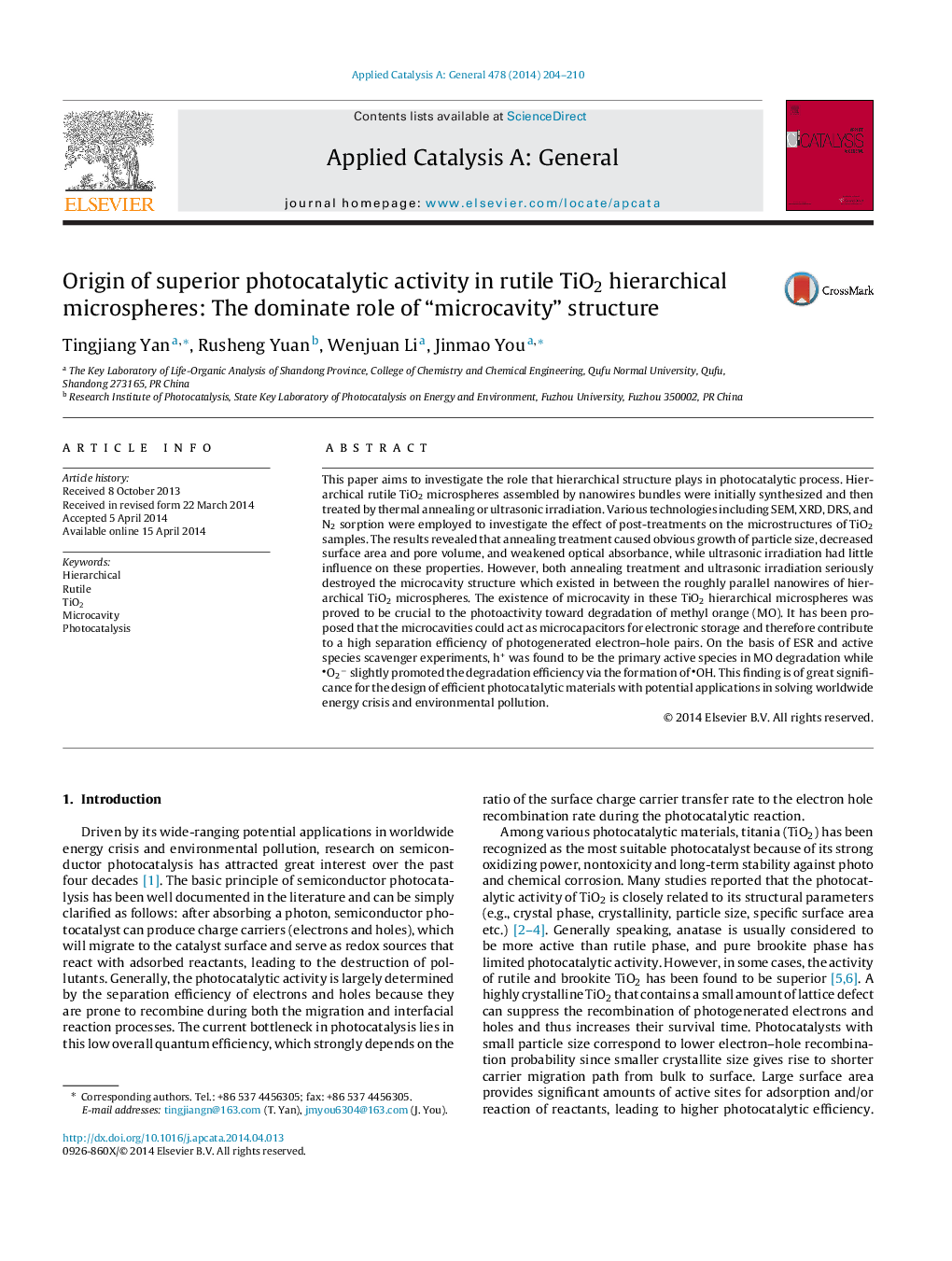| کد مقاله | کد نشریه | سال انتشار | مقاله انگلیسی | نسخه تمام متن |
|---|---|---|---|---|
| 39689 | 45831 | 2014 | 7 صفحه PDF | دانلود رایگان |

• Hierarchical TiO2 microspheres assembled by nanowires bundles were synthesized.
• Annealing and ultrasonic irradiation had great effect on the structures of TiO2.
• The microcavity structure of hierarchical TiO2 was destroyed upon both treatments.
• The disappearance of microcavity structure reduced the photocatalytic activity.
This paper aims to investigate the role that hierarchical structure plays in photocatalytic process. Hierarchical rutile TiO2 microspheres assembled by nanowires bundles were initially synthesized and then treated by thermal annealing or ultrasonic irradiation. Various technologies including SEM, XRD, DRS, and N2 sorption were employed to investigate the effect of post-treatments on the microstructures of TiO2 samples. The results revealed that annealing treatment caused obvious growth of particle size, decreased surface area and pore volume, and weakened optical absorbance, while ultrasonic irradiation had little influence on these properties. However, both annealing treatment and ultrasonic irradiation seriously destroyed the microcavity structure which existed in between the roughly parallel nanowires of hierarchical TiO2 microspheres. The existence of microcavity in these TiO2 hierarchical microspheres was proved to be crucial to the photoactivity toward degradation of methyl orange (MO). It has been proposed that the microcavities could act as microcapacitors for electronic storage and therefore contribute to a high separation efficiency of photogenerated electron–hole pairs. On the basis of ESR and active species scavenger experiments, h+ was found to be the primary active species in MO degradation while O2− slightly promoted the degradation efficiency via the formation of OH. This finding is of great significance for the design of efficient photocatalytic materials with potential applications in solving worldwide energy crisis and environmental pollution.
Figure optionsDownload high-quality image (110 K)Download as PowerPoint slide
Journal: Applied Catalysis A: General - Volume 478, 20 May 2014, Pages 204–210